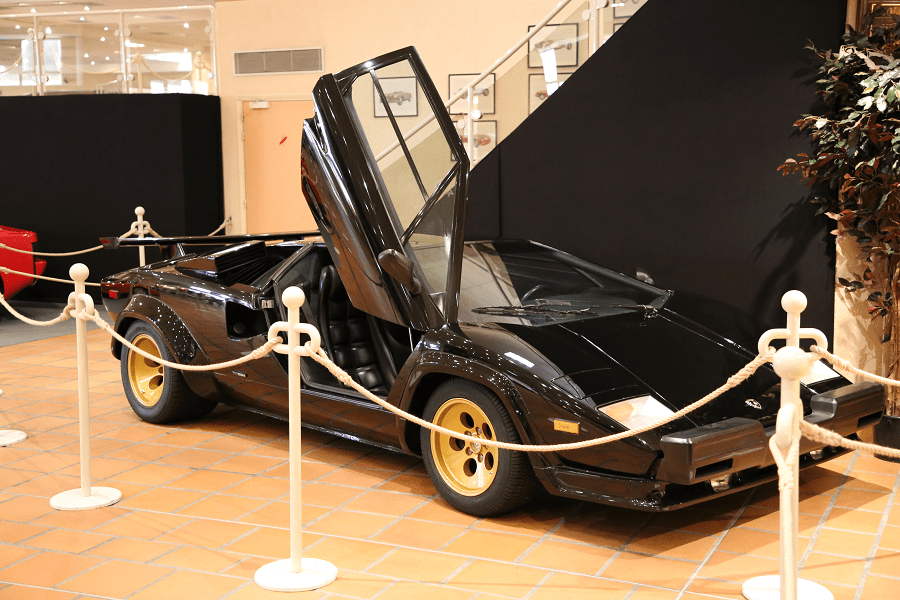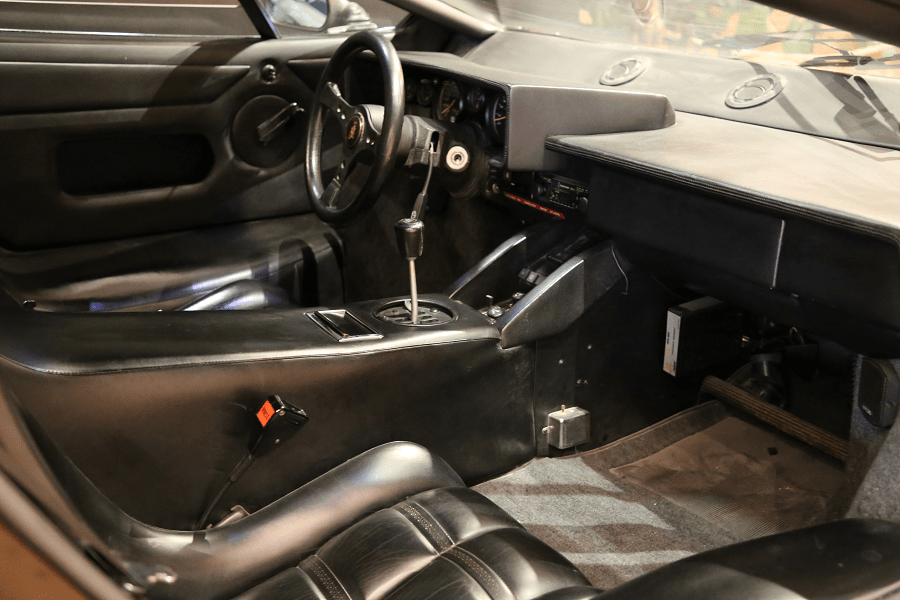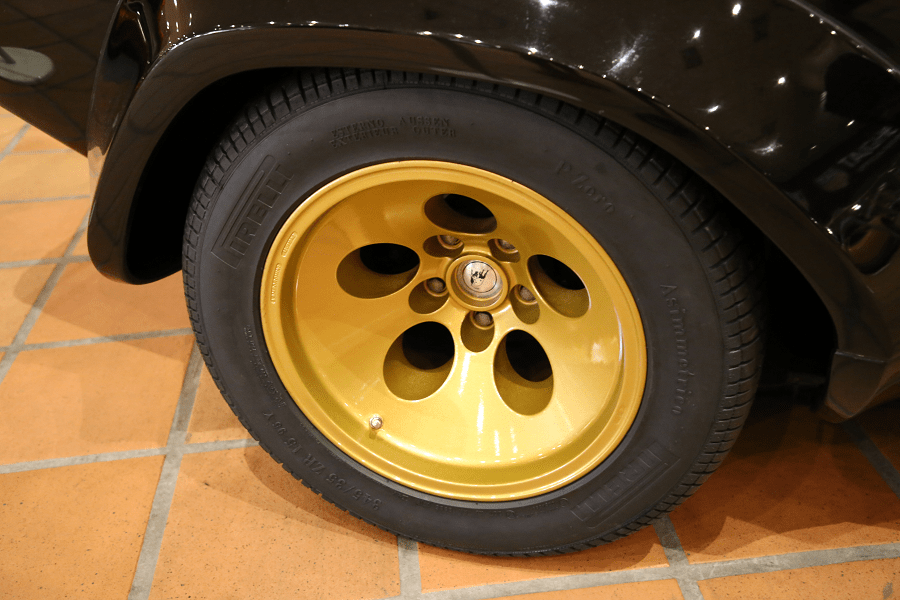The Lamborghini Countach is a sports car from 1974 to 1990. 370 HP. See here a drawing
The Countach was styled by Marcello Gandini of the Bertone design studio. His design for the Countach’s predecessor, the Miura, achieved commercial success and critical acclaim from the automotive press when it was introduced in March 1966. Following the Miura’s debut, Gandini began experimenting with a new, more angular and geometric design language in a series of concept cars for Lamborghini, Alfa Romeo and Lancia. In particular, the 1968 Alfa Romeo Carabo and 1970 Lancia Stratos Zero were direct styling precursors to the Countach.
Like the Countach, they were both entirely wedge-shaped, mid-engine designs with a low, flat front, truncated tail and angular details. Both of these concept cars featured unconventional methods of entry into the passenger compartment—a hinged windshield for the Stratos Zero and scissor doors for the Carabo—foreshadowing the scissor doors used on the Countach.
At the start of the LP112 project in 1970, Lamborghini commissioned Gandini and his team at Bertone to develop a body for the then-unnamed prototype. Chief engineer Paolo Stanzani supplied the design team with chassis information so that body design could proceed while the mechanical details of the prototype were finalised. Shortly before the 1971 Geneva Auto Show, the finished chassis was shipped to Bertone, where the prototype bodywork and interior were installed.
The resulting Countach LP500 prototype was unveiled at the 1971 Geneva Auto show, where its unconventional design drew great public interest and extensive press coverage. The LP500 prototype had a crisp, wedge-shaped design that, compared to the Miura, was wide and very low but shorter in overall length. Overall dimensions of the prototype were 185 cm (73 in) wide, 103 cm (41 in) tall, and 401 cm (158 in) long.
The nose of the prototype tapered sharply to a thin grille, an uninterrupted slope enabled by headlights in retractable housings that flipped down inside the body when not in use. The prototype’s body lacked bumpers, aerodynamic spoilers, side mirrors and any other addition that would have interrupted the lines of Gandini’s design.
Trapezoidal shapes appeared throughout the body, including in the windshield, side windows, door openings, hood and engine covers and taillights. Air was supplied to the engine and side-mounted radiators through louvered vents immediately behind the side windows, although road testing quickly demonstrated these vents alone were inadequate to control engine temperatures.
















